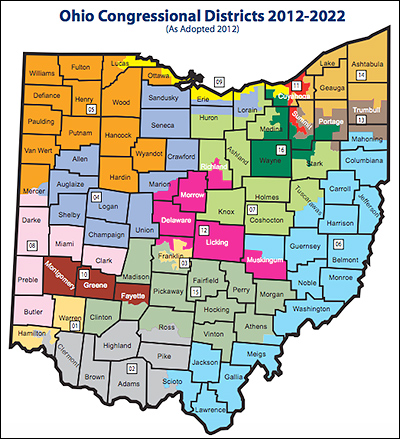By Jim Ellis
 March 19, 2020 — The COVID-19 virus is causing obvious problems worldwide, and it’s changing the United States’ electoral system. Several states all with primaries on or before June 23 have already moved their date or are discussing such an option.
March 19, 2020 — The COVID-19 virus is causing obvious problems worldwide, and it’s changing the United States’ electoral system. Several states all with primaries on or before June 23 have already moved their date or are discussing such an option.
First, a total of six states already have held primary events and three general election cards are set. On March 3, full state nominating elections were held in Alabama, Arkansas, California, North Carolina, and Texas. Illinois followed suit on March 17. Ohio was also supposed to also vote on March 17 but halted their election at the last minute and moved to June 2. Four of the six early voting states hold runoffs, and three will host some significant secondary nominating elections.
With a 30-percent runoff law, North Carolina only has one congressional finalist election, the open 11th District Republican battle between former Haywood County Republican Party chair Lynda Bennett and investor Madison Cawthorn. Texas has a 50 percent runoff law, and the state will feature a Democratic runoff in the Senate race along with five Democratic congressional runoffs and seven on the Republican side. Though Arkansas requires 50 percent to win a party nomination outright, no federal runoff elections are necessary. Therefore, we have full sets of general election nominees for all regular 2020 races in Arkansas, California, and Illinois.
News came from Alabama yesterday when Gov. Kay Ivey (R) announced that the state is transferring the March 31 runoff all the way to July 14. The significantly longer cycle will potentially change outcomes, the Senate race in particular.
As you will remember, former US Attorney General and ex-Alabama senator Jeff Sessions finished second in the March 3 primary, one point behind retired Auburn University head football coach Tommy Tuberville. Until yesterday, the two were heading for deciding the nomination at the end of the month. All polling was suggesting a Tuberville victory. Now, with almost four full months until the runoff, this contest has the potential of changing. Sessions will now have adequate time to alter his campaign message and has the opportunity to rebound and capture the nomination. The winner faces Sen. Doug Jones (D) in the general election.




 Jan. 23, 2020 — A total of 35 US Senate races will adorn the various state ballots this year, and the nomination process will begin in five states on Super Tuesday. Voters in Alabama, Arkansas, North Carolina, and Texas will make Senate candidate choices on March 3 since their domains have linked the statewide primary concurrently with the presidential primaries. The remaining Super Tuesday statewide primary state, California, does not host a Senate race in this election cycle.
Jan. 23, 2020 — A total of 35 US Senate races will adorn the various state ballots this year, and the nomination process will begin in five states on Super Tuesday. Voters in Alabama, Arkansas, North Carolina, and Texas will make Senate candidate choices on March 3 since their domains have linked the statewide primary concurrently with the presidential primaries. The remaining Super Tuesday statewide primary state, California, does not host a Senate race in this election cycle. Jan. 3, 2020 — The Census Bureau just released its new population growth estimates for the 12-month period between July 1, 2018 and July 1, 2019. Their data allows us to assess just which states will likely gain and lose congressional districts in 2020 reapportionment, both in terms of the real numbers just presented and for projecting the final count once the decade’s final-year patterns are calculated and the census is actually conducted.
Jan. 3, 2020 — The Census Bureau just released its new population growth estimates for the 12-month period between July 1, 2018 and July 1, 2019. Their data allows us to assess just which states will likely gain and lose congressional districts in 2020 reapportionment, both in terms of the real numbers just presented and for projecting the final count once the decade’s final-year patterns are calculated and the census is actually conducted. Dec. 3, 2019 — Now that two states have already completed their congressional candidate filing (Alabama and Arkansas) and five more are scheduled for December including Illinois, which closed yesterday, it is time to begin to ascertain where US House politics might reasonably stand right now.
Dec. 3, 2019 — Now that two states have already completed their congressional candidate filing (Alabama and Arkansas) and five more are scheduled for December including Illinois, which closed yesterday, it is time to begin to ascertain where US House politics might reasonably stand right now.